Abandoned Castles in England
In this article, we chose several abandoned castles from around England, with different architectural styles and fortifications, to explore and learn a bit about their history.
Ludlow Castle, Shropshire
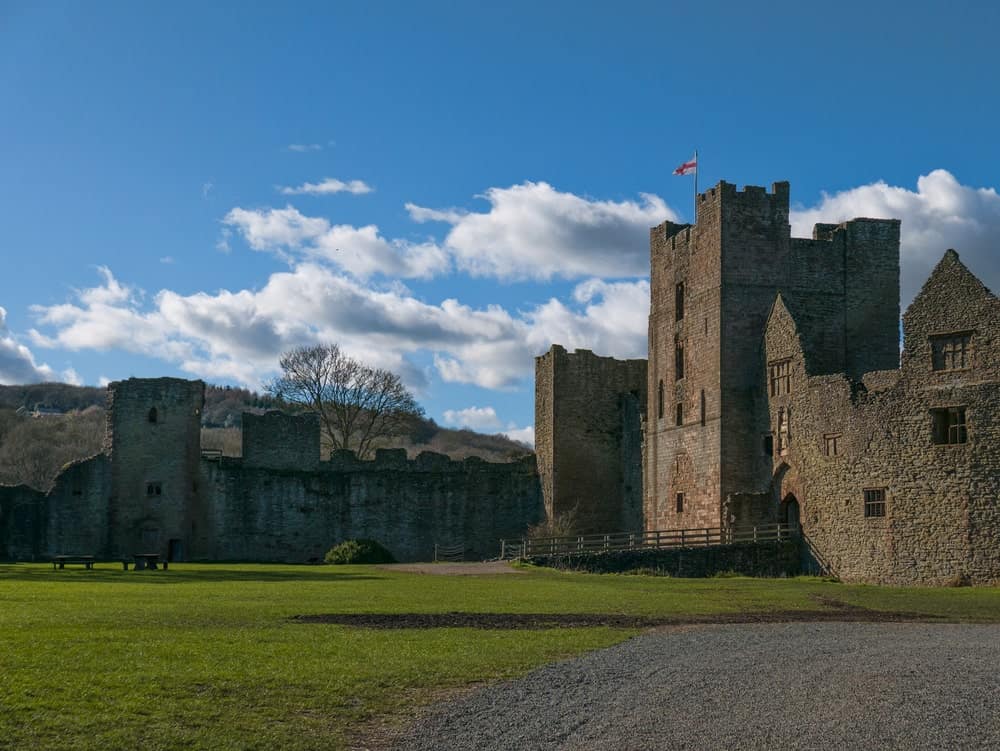
After the Norman conquest, Walter de Lacy built the currently abandoned Ludlow Castle in 1075 as one of the first stone forts in England. The stone fortifications at Ludlow finished before 1115, with four towers, a gatehouse tower and a ditch on two sides. From the 12th century onward, almost all occupying families added a level of fortification to the building, from the Great Tower to the outer and inner bailey.
When the estate became the capital of Wales by the end of the 15th century, renovation works followed during the 16th century, making the Ludlow Estate one of the most luxurious dwellings of the 17th century. Following the English Civil War, Ludlow was abandoned, and its contents sold, marking the beginning of its fall into disrepair.
Despite adding a mansion in the outer bailey after 1811, the remainder of the fort remained the same and began attracting visitors and tourists. Over the following century, the Powis Estate, which still owns the estate today, carried out extensive cleaning and restoration of Ludlow Castle over the course of a century.
Kenilworth Castle, Warwickshire
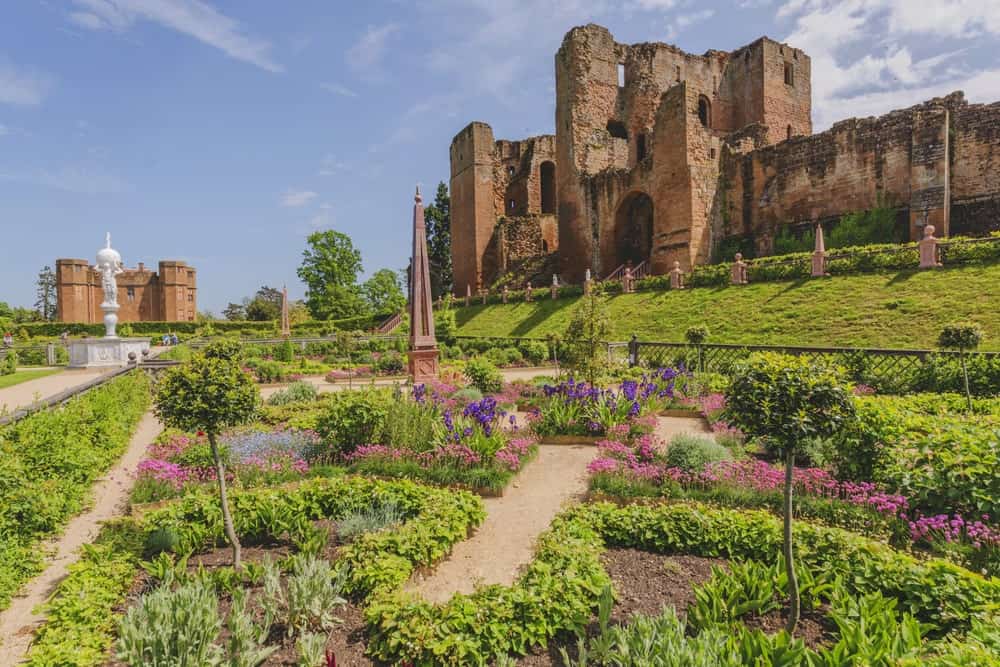
Geoffrey de Clinton built Kenilworth Castle in the early 1120s, and it remained in its original shape for the rest of the 12th century. King John paid special attention to the Kenilworth; he ordered using stone in the construction of the outer bailey wall, constructing two defence walls and creating the Great Mere as a water body to protect the fort. The fortifications emphasised Kenilworth’s importance and King John’s son, Henry III seized it from him.
Kenilworth was the site of the longest siege in English history. In an attempt to compromise with the barons rebelling against him, King Henry III handed them his son, Edward, as a hostage in 1264. The barons treated Edward cruelly, even though they released him in 1265. The following year, the owner of Kenilworth Fort at the time, Simon de Montfort II, was supposed to hand over the fort to the King but refused to act upon their agreement.
King Henry III besieged the fort in June 1266, and the siege lasted until December of the same year. After all, attempts failed to shake the castle’s fortifications, the King gave the rebels the opportunity to repurchase their confiscated estates back if they surrendered the fort.
Moving forward, Kenilworth fort proved its significance by being the site of many important events. These include the Lancastrian operations during the Wars of the Roses, removing Edward II from the throne and the extravagant reception the Earl of Leicester prepared for Queen Elizabeth I. Unfortunately, Kenilworth was slighted after the First Civil War, and the estate has remained an abandoned castle since then. The English Heritage Society has been managing the estate since 1984.
Bodiam Castle, Robertsbridge, East Sussex
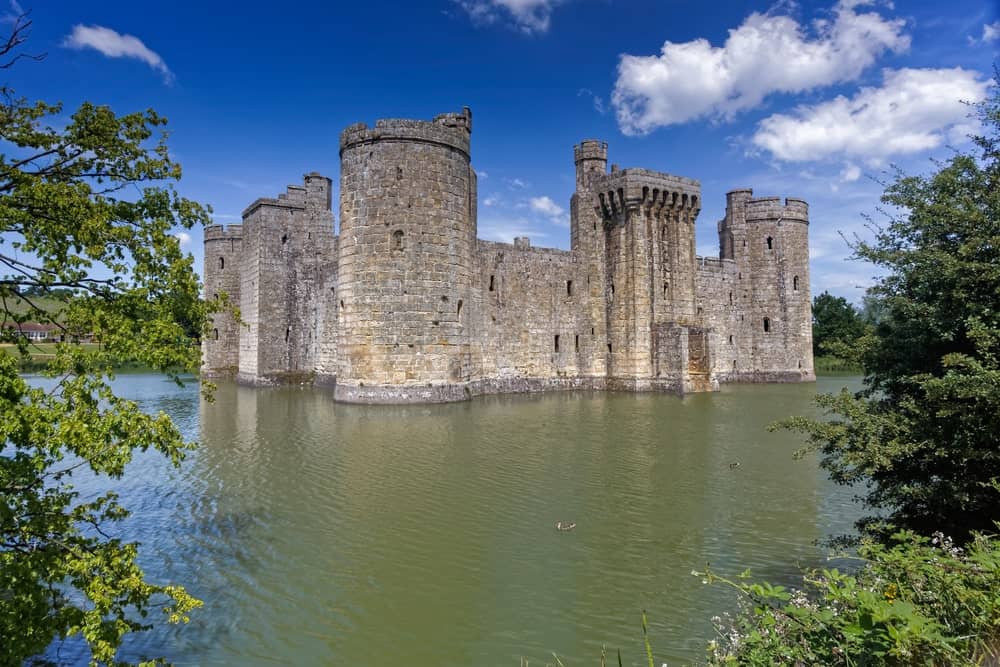
Sir Edward Dalyngrigge built Bodiam Castle in 1385 as a moated fort to serve as a defence against France during the Hundred Years’ War. Bodiam Castle’s unique design includes no keep but has defence towers topped with crenellations and a surrounding artificial water body. The Dalyngrigge family owned and lived in the fort until the last of their family died in 1452, and the estate passed to The Lewknor Family. Almost two centuries later, in 1644, the estate ended up in the possession of Parliamentarian, Nathaniel Powell.
As with the majority of forts after the Civil War, Bodiam’s barbican, bridges and the buildings inside the estate were slighted, while the castle’s main structure was maintained. The castle began to attract tourists during the 19th century, and when John ‘Mad Jack’ Fuller bought it in 1829, he started to restore its grounds. After that, each new owner of the estate continued the restorations Fuller started until the National Trust acquired the estate in 1925.
Bodiam Castle still holds its unique quadrangular shape today, making it the most complete version of this type of structure from the 14th century. A part of the fort’s barbican survived, but the majority of the fort’s interior is in ruins, which gives this abandoned castle a wonderous atmosphere.
Pevensey Castle, Pevensey, East Sussex
 100vw, 1000px” data-lazy-src=”https://www.connollycove.com/wp-content/uploads/2022/12/Pevensey-Castle-Pevensey-East-Sussex-abandoned-castles-in-England-min.jpg” /><figcaption class=) Pevensey Castle, Pevensey, East Sussex
Pevensey Castle, Pevensey, East SussexThe Romans built the medieval fort of Pevensey in 290 AD and called it Anderitum, probably as part of a group of forts to protect the coast from Saxon pirates. Some scholars suggest that Pevensey fort, along with the other Saxon forts, was an unsuccessful defence mechanism against Rome’s power. After the end of the Roman occupation in 410 AD, the fort fell into disrepair until the Normans occupied it in 1066.
The Normans fortified and restored Pevensey with the construction of a stone keep within its walls, which served it well against several future sieges. However, military forces never stormed the estate, allowing it to hold its fortifications. Pevensey Castle was inhabited all through the 16th century, despite starting to fall into deterioration during the 13th century. It remained uninhabited since the 16th century until it served as a defence ground against the Spanish invasion in 1587, and during WWII in 1940, against the German invasion.
Archaeological excavations at this abandoned castle go back as early as the 18th century until the Sussex Archeological Society was founded within the fort’s walls by the mid-19th century. The society undertook further excavations at the estate, discovering artefacts that date back to the Roman era of the building. When the Ministry of Works acquired the estate in 1926, it took over the excavation works.
Goodrich Castle, Herefordshire
Godric of Mappestone built Goodrich Castle as the finest example of English military architecture in the country, using earth and wooden fortifications and later changed into stone, in the mid-12th century. The most significant feature of the fort’s fortification is the Great Keep, which is believed to have been built upon orders from King Henry II. Goodrich’s estate remained in Crown property until King John gave it away to William the Marshal, as a way of gratitude by the Crown, in return for his services.
Goodrich fort witnessed several military sieges due to its proximity to the Welsh borders. Such frequent attacks resulted in more fortifications at the end of the 13th and through the 14th century. The estate remained in The Talbot family until Gilbert Talbot died, and the estate was passed on to the Earl of Kent, Henry Grey, who decided to rent the fort rather than live there.
Following a brutal exchange of attacks during the English Civil War, The Royalists surrendered in 1646. The currently abandoned castle of Goodrich was slighted the next year and remained a ruin to the start of the 20th century when the owners granted it to the Commissioner of Works. The Commissioner undertook restoration and stabilisation work to maintain the fort as a favourite tourist attraction.
Dunstanburgh Castle, Northumberland
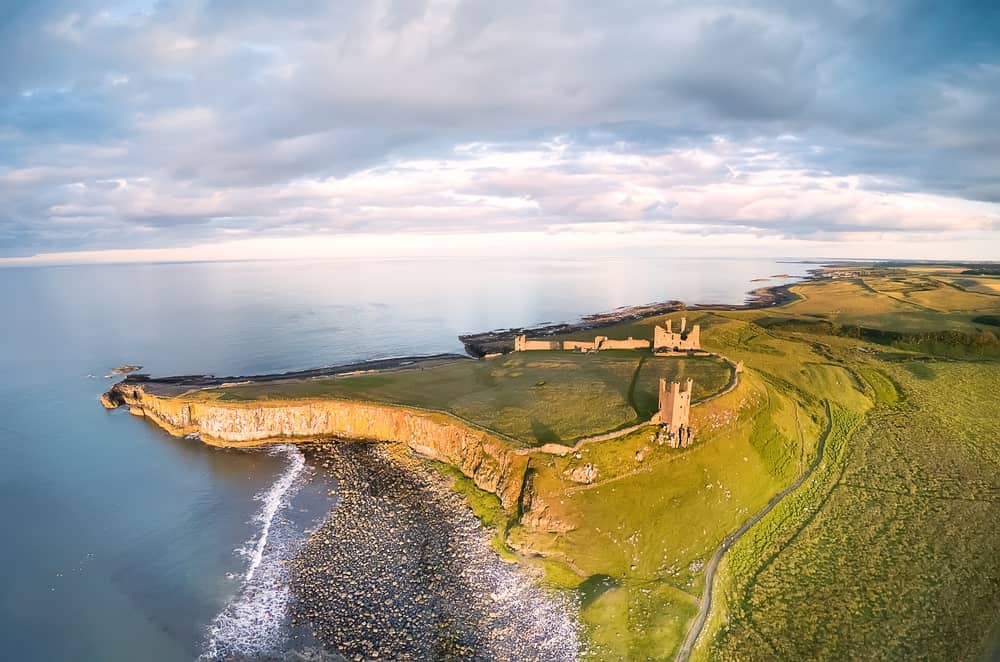
Built on the abandoned remains of a prehistoric fort, Earl Thomas of Lancaster built the abandoned castle of Dunstanburgh, in the 14th century, as a refuge from King Edward II. Thomas is believed to have stayed at the estate once only before he was captured and executed by the royal forces. Afterwards, the estate’s ownership went to the Crown, during which it was fortified several times to serve as a stronghold against Scottish attacks and Wars of the Roses.
When the fort’s military importance diminished, the Crown sold it to the Grey Family, but the estate didn’t remain in the hands of one family only, as the costs of maintenance kept rising. During WWII, the estate was fortified to defend the coastline from possible attacks. Since then, the National Trust has owned and maintained the estate.
Dunstanburgh fort is surrounded by three artificial lakes, and its main fortifications include a massive curtain wall and the Great Gatehouse with its two ashlar-stone defence towers. The foundations of the fortifying long barbican are merely visible. There isn’t much remaining on the inside, the three internal complexes lay in ruins, and a stone quay of the southeast harbour is the only part that remains.
Newark Castle, Nottinghamshire
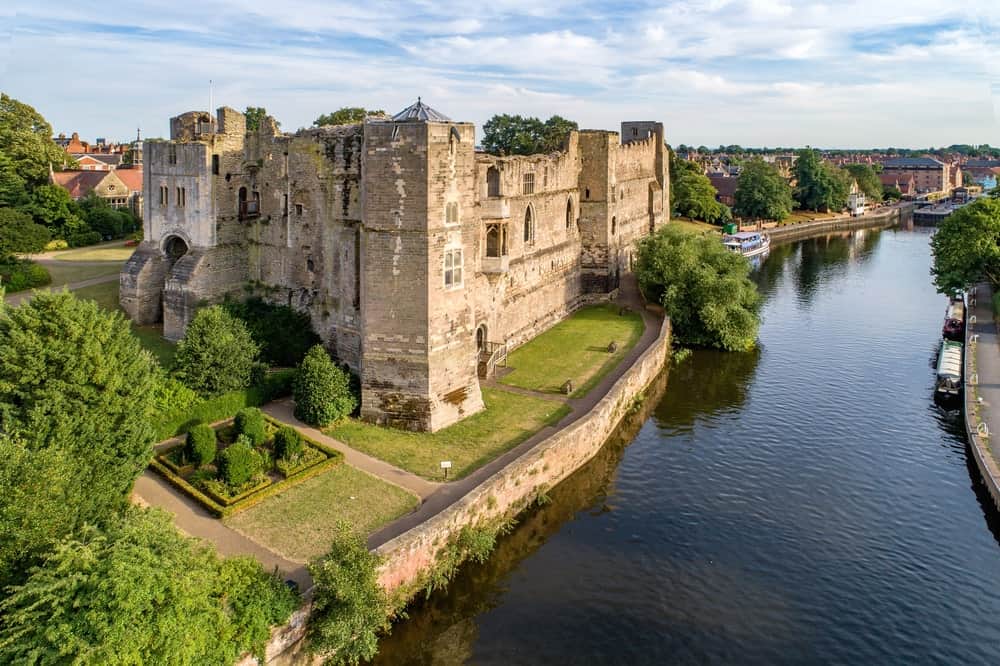
With a beautiful look over the River Trent, Alexander, Bishop of Lincoln, built Newark Castle in the mid-12th century. As with the majority of castles at the time, Newark was built using earth and timber but was rebuilt again in stone, by the end of the century. When the English Civil War began, the fort was dismantled, as with all forts in England, and left as ruins.
Architect Anthony Salvin began the restoration of Newark, in the mid-19th century, while the corporation of Newark continued the restoration work when it bought the estate in 1889. Despite being an abandoned castle, its main buildings still stand today, offering a fantastic view over the River Trent, and you can see all restoration work from the 19th century in brick.
Corfe Castle, Dorset
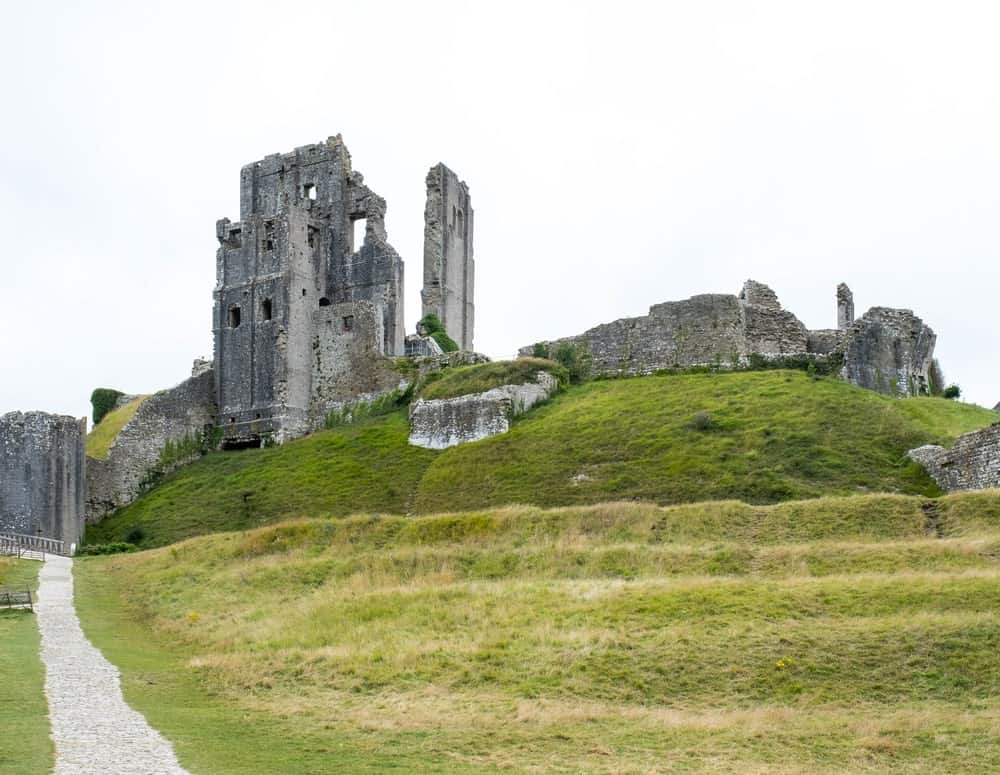
Corfe Castle was a mighty fort standing in the gap of protection of Purbeck Hills and overlooking the village of Corfe Castle. William the Conqueror built the castle in the 11th century, using stone when most castles back then consisted of earth and timber. The castle was built in a medieval style, and William had a stone wall built around it, since it stood on high grounds, unlike most medieval castles at the time.
The estate was used as a storage facility and as a prison for political rivals during the 13th century, such as Eleanor, the rightful Duchess of Brittany, Margaret and Isobel of Scotland. Henry I and Henry II fortified the castle during the 12th century, which helped the next owners defend the castle from the attacks of the Parliamentarian Army as part of the English Civil War. When the Parliament ordered the demolition of the castle in the 17th century, villagers used its stones as building materials and the castle was left in ruins.
Corfe remained in the ownership of the Bankes family until Ralph Bankes bequeathed it, along with all Bankes estates, to the National Trust, in 1981. The Trust worked on the conservation of the abandoned castle, so it would remain open to visitors. Today, great parts of the stone wall, its towers and a great part of the main keep are still standing.

